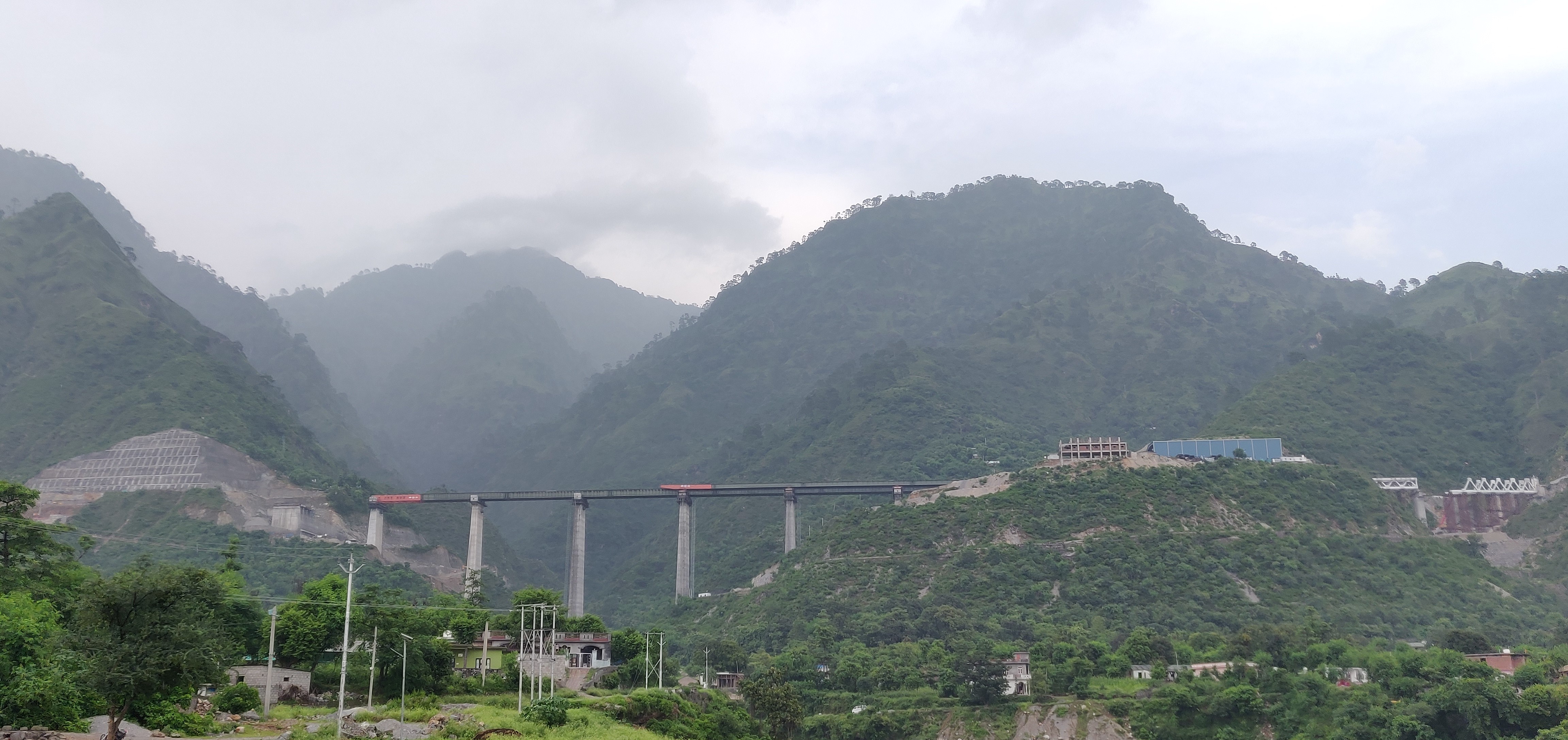
16 KRCL bridges to make travel easier between Katra and Banihal
The bridges will allow passengers to reach their destination in the safety of railway coaches along a 66-Km alignment that passes through Reasi, Bakkal, Kauri & Sangaldan, writes Vishwas Waghmode
The completion of the bridge superstructure on the arch of the Chenab Railway Bridge may have cleared the deck for laying of tracks to connect Jammu and Kashmir (J&K) with the rest of India, but the usefulness of the bridge will only be realised after sixteen other bridges connecting to the world’s highest single-arch railway bridge are ready. Part of the ambitious Udhampur Srinagar Baramulla Rail Link (USBRL) project, the connecting bridges will allow passengers to reach their destination in the safety of railway coaches.
Constructed by Afcons, the 16 KRCL bridges are nearing completion in the harsh and rugged terrains of J&K. The bridges are located along a 66-Km alignment that passes through Reasi, Bakkal, Kauri & Sangaldan.
For the first time in India, a series of Pre-Loaded Spring Dampers (PSDs) are being installed on bridges to counter seismic load and ensure the safety of the structures. It is being done in two of the 16 bridges - Bridge 39 and Bridge 43. This radical step will usher in a new era in bridge construction in such geologically complex locations. Over 90 per cent construction work on the 16 bridges has been completed, and the remaining work is expected to be completed within the next few months.

Introduction of PSD in India
Alimilla Sagar, Project Manager for the 16 KRCL bridges, said that ten PSDs will be used in Bridge 39 and six in Bridge 43 (Bridge 43 connects with the Chenab Railway Bridge). The PSDs are being imported from Italy in batches. The installation is likely to begin in October and completed by December 2022. The PSDs will be installed in the main span and two platform spans. The carpentry items for the PSDs have already arrived from Italy.
Besides this a tie-down mechanism is being used on Bridge 39 to counter high wind velocity. "Bridge 39 faces the Chenab Valley and high velocity of wind is expected to hit the bridge. The tie-down arrangement will counter it and ensure the bridge’s safety," Sagar said.
The PSDs are particularly necessary for bridges 39 & 43 because they are continuous composite steel girders with spans of 490m and 777m respectively. Any seismic wave might have maximum impact on them. Moreover, the two bridges are located in the Reasi district which falls under most-active seismic region of Zone-V, and the Reasi fault lines pass through the region.

Heavy-duty construction
Close to 17 lakh cum of excavation has been done to erect the 16 bridges. Over 25 thousand metric ton of structural steel has been used in their construction along with around 27500 MT reinforcement steel and around 63 thousand metric ton of cement has been consumed in the entire project.
Bridge 39 has seven piers, of which three are higher than 70m. The tallest pier is 103m, almost 30m higher than the Qutub Minar. “The bridge foundations are located at almost inaccessible locations. The entire superstructure of 490m length was fabricated in structural steel. It was assembled behind abutment and incrementally launched,” said Mandar Karnik, VP, Core Methods & Engineering Group (CMEG).
External challenges
The multifarious challenges faced during construction of these bridges include adverse weather conditions, complex geology, and extreme engineering. “Every year, we faced unprecedented rainfall from July till January. It affected operations, and, many a times, we were forced to suspend work for safety reasons. Secondly, constructing the bridges in ravines and valleys and sometimes with curvature was really challenging,” said Ladli Parshad, Senior Manager, Quantity Survey.
Narrow and landslide-prone roads with hairpin bends were a nightmare for transportation of material, especially heavy steel girder segments. “The steep slopes and frequent landslides always raised doubts about the safety of transportation. We, however, managed to pull it off successfully with time,” Parshad added.
Subash C. Satpathy, Senior Manager, HSE informed that the project has already achieved 17.5 Million Safe Man Hours exhibiting the strict implementation of safety protocols.
Over the past decade or more, Afcons has consistently worked towards the development of infrastructure in Jammu and Kashmir. By constructing numerous road and rail bridges, road and railway tunnels, improving highways, and improving the lives of locals with meaningful and enriching social engagements, the organisation has lived up to its values of building infrastructure, unlocking value and transforming lives.
What is PSD?
The Pre-Loaded Spring Damper (PSD) is designed to counter the seismic load in structures, limiting and damping the movements that arise between parts of a structure during an earthquake.
Why is it useful?
It enhances the structure’s strength and resistance to seismic forces. On bridges, they are installed directly between the bridge deck and piers.
Why is PSD used only in two bridges – 39 & 43?
Since bridges 39 & 43 are continuous composite steel girders with spans of 490m and 777m respectively any seismic wave might have maximum impact on them. Moreover, these bridges are located in the Reasi district which falls under most-active seismic region of Zone-V, and the Reasi fault lines pass through the region.
Key Highlights
• 16 KRCL bridges with a total length of 2.3 km
• Bridge 39 has 7 piers, including tallest pier 103m, almost 30m higher than the Qutub Minar
• Bridge 43 is 777m long with 13 spans and has a curvature of 1.4 degree from Katra end
• 16,71,943cum of total excavation done in the project
• 25,160MT of total Structural steel used for construction
• 27500MT of total Reinforcement steel used in all bridges
• 63,164 MT of cement consumed in the project



